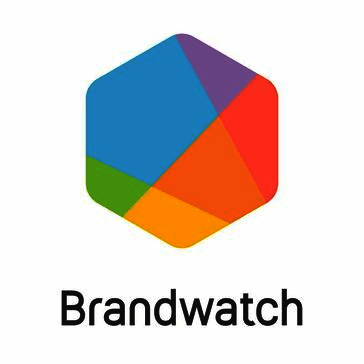Description

Brandwatch Consumer Intelligence

Statusbrew
Comprehensive Overview: Brandwatch Consumer Intelligence vs Statusbrew
Brandwatch Consumer Intelligence
a) Primary Functions and Target Markets
Brandwatch Consumer Intelligence, a part of Brandwatch’s suite of tools, is primarily designed to provide deep insights into consumer behavior through advanced social listening and analytics. It collects vast amounts of data from social media platforms, forums, blogs, and other online sources to help brands understand public perception, trends, and market demands.
Primary Functions:
- Social Listening: Monitoring conversations across various channels to gather real-time data about consumer opinions and trends.
- Analytics and Reporting: Offering detailed analytics and customizable reports to identify insights and strategic opportunities.
- Trend Analysis: Detecting emerging trends and potential crises to enable proactive brand management.
- Competitor Analysis: Tracking competitor mentions and consumer sentiment to better position the brand within the market.
Target Markets:
- Large enterprises and global brands across various sectors such as retail, finance, technology, and healthcare.
- Marketing and PR agencies seeking to enhance their strategies with data-driven insights.
- Businesses focused on consumer research and product development.
b) Market Share and User Base
Brandwatch is considered a leader in the social intelligence space. It boasts a significant market presence due to its robust data analysis capabilities and extensive range of features. The tool is often chosen by larger organizations that require comprehensive analytics and are willing to invest in a premium product.
Statusbrew
a) Primary Functions and Target Markets
Statusbrew is a social media management platform that offers tools to manage, engage, and analyze across social networks efficiently. It emphasizes simplified management workflows for social media teams looking to enhance engagement and optimize posts.
Primary Functions:
- Social Media Management: Centralized platform for publishing, scheduling, and monitoring across multiple social media channels.
- Audience Engagement: Tools for engaging with followers, including managing comments and messages.
- Collaboration Tools: Features to facilitate teamwork within social media campaigns, including approval workflows and role assignments.
- Analytics and Reporting: Simplified reporting to track social media performance metrics and ROI.
Target Markets:
- Small to midsize businesses (SMBs) looking for efficient social media management solutions.
- Marketing teams and social media managers focused on optimizing social media presence and engagement.
- Agencies needing a collaborative tool to manage client accounts efficiently.
b) Market Share and User Base
Statusbrew is more tailored towards SMBs and marketing teams that require a cost-effective, user-friendly tool for managing social media efforts. It may not have the extensive market reach of Brandwatch, largely because it focuses on management and engagement rather than in-depth consumer intelligence.
c) Key Differentiating Factors
-
Functionality Focus:
- Brandwatch Consumer Intelligence focuses on in-depth analytics and consumer insights, going beyond basic social media metrics to deliver comprehensive consumer behavior analysis.
- Statusbrew is designed for streamlined social media management and team collaboration, emphasizing ease of use and engagement tools.
-
Target Audience and Market:
- Brandwatch is tailored for larger enterprises looking for sophisticated data analytics and insights.
- Statusbrew caters more to SMBs that require efficient social media management tools with intuitive UI and team collaboration features.
-
Pricing Structure:
- Brandwatch typically operates on a higher price bracket suitable for enterprises with budgets aligned to comprehensive analytics needs.
- Statusbrew is generally more affordable, appealing to smaller companies or individual teams within larger firms.
-
Scalability and Integration:
- Brandwatch offers advanced integration and scalability options suitable for complex data requirements.
- Statusbrew excels in simplifying social media tasks with intuitive integrations essential for daily social operations.
In summary, Brandwatch Consumer Intelligence and Statusbrew serve different segments of the market with distinct functionalities, making them suitable for organizations with varying needs and resources.
Contact Info

Year founded :
Not Available
Not Available
Not Available
Not Available
Not Available

Year founded :
2011
+1 408-786-5235
Not Available
Japan
http://www.linkedin.com/company/statusbrew
Feature Similarity Breakdown: Brandwatch Consumer Intelligence, Statusbrew
To provide a comprehensive feature similarity breakdown for Brandwatch Consumer Intelligence and Statusbrew, let's examine the following aspects:
a) Core Features in Common
-
Social Media Monitoring: Both platforms allow users to monitor social media conversations across various channels. Users can track brand mentions, keywords, and hashtags to gather insights.
-
Analytics and Reporting: Brandwatch and Statusbrew offer analytics tools that help users measure the impact of their social media activities. They provide reports on engagement, reach, sentiment analysis, and more.
-
Sentiment Analysis: Both tools include sentiment analysis to gauge public sentiment about a brand or topic, helping users understand the tone of the conversations.
-
Audience Insights: They provide insights into audience demographics, behaviors, and preferences, which help in better targeting and content creation.
-
Collaboration Tools: Both platforms support team collaboration, enabling multiple users to work together on campaigns, reports, and social media engagement.
b) User Interface Comparison
-
Brandwatch Consumer Intelligence: Known for its robust and detailed user interface, Brandwatch offers extensive customization options, complex data visualizations, and comprehensive dashboards. This makes it suitable for large organizations that need deep data interrogation and analysis.
-
Statusbrew: The interface is more streamlined and user-friendly, focusing on simplicity and ease of use. It caters to teams and individuals looking for a straightforward approach to social media management without the overwhelming complexity.
c) Unique Features
-
Brandwatch Consumer Intelligence:
- Advanced AI Capabilities: Brandwatch is known for its advanced AI and machine learning capabilities, which are utilized in sentiment analysis and audience segmentation.
- Extensive Data Sources: It offers a wide range of data sources, including traditional media, social media, and other online platforms, providing a more holistic view of consumer conversations.
-
Statusbrew:
- Publishing and Scheduling: Statusbrew excels in its social media management capabilities, particularly in scheduling and publishing posts across multiple platforms with ease.
- Engagement Tools: The platform provides efficient tools for managing social media inboxes and responding to audience interactions, making it ideal for customer support and community management.
In summary, while both Brandwatch and Statusbrew offer core social media monitoring and analytics features, Brandwatch stands out with its advanced AI analysis and extensive data sourcing, making it suitable for in-depth consumer intelligence. Statusbrew, on the other hand, focuses on ease of use with strong social media management features, catering to efficient team collaboration and engagement.
Features

Not Available

Not Available
Best Fit Use Cases: Brandwatch Consumer Intelligence, Statusbrew
Brandwatch Consumer Intelligence and Statusbrew are both powerful tools with distinct capabilities suited for different types of businesses and scenarios. Here's a breakdown of their best fit use cases and how they cater to different industries and company sizes:
Brandwatch Consumer Intelligence
a) Best Fit Use Cases:
-
Large Enterprises and Brands:
- Ideal for large companies with substantial social media presence and marketing budgets who need comprehensive consumer insights and digital listening tools.
- Particularly beneficial for brands that need to monitor global trends and sentiment across numerous platforms.
-
Market Research and Analysis:
- Useful for market research companies or marketing departments looking to analyze consumer sentiment, track brand reputation, or understand trends in real-time.
-
Competitive Analysis:
- Companies are focusing on competitive intelligence to track industry trends, understand competitor strategies, and find market opportunities.
-
Product Development and Innovation:
- Brands looking to use consumer feedback and market trends to guide product development and innovation processes.
d) Industry Verticals and Company Sizes:
- Industry Verticals:
- Suitable for industries like retail, consumer goods, technology, automotive, and any sector where consumer sentiment drives business decisions.
- Company Sizes:
- Typically aimed at medium to large enterprises due to its comprehensive features and potentially higher costs.
Statusbrew
b) Preferred Scenarios:
-
Small to Medium Businesses (SMBs):
- Statusbrew is ideal for SMBs looking for a cost-effective yet robust social media management tool to handle publishing, engagement, and analytics.
-
Agencies and Teams:
- Marketing agencies or teams within organizations managing multiple clients or channels can benefit from its collaborative features and workflow management.
-
Multi-channel Social Media Management:
- Companies needing efficient management of multiple social media platforms from a single dashboard.
-
Customer Engagement Focus:
- Brands focused on customer engagement and interaction, using social media as a primary communication tool for customer service and community building.
d) Industry Verticals and Company Sizes:
- Industry Verticals:
- Versatile across industries like hospitality, retail, tech startups, and service sectors that prioritize customer engagement and social media presence.
- Company Sizes:
- Better suited for small to medium-sized businesses and teams within larger organizations that require efficient social media management and customer engagement tools.
In summary, Brandwatch Consumer Intelligence excels at providing deep consumer insights and is typically favored by larger enterprises needing these sophisticated capabilities. In contrast, Statusbrew is more accessible for small to medium-sized businesses or agencies looking for effective social media management and customer engagement solutions. These distinctions cater to the specific needs and scales of different industries and company sizes.
Pricing

Pricing Not Available

Pricing Not Available
Metrics History
Metrics History
Comparing teamSize across companies
Conclusion & Final Verdict: Brandwatch Consumer Intelligence vs Statusbrew
Conclusion and Final Verdict: Brandwatch Consumer Intelligence vs. Statusbrew
a) Best Overall Value
When considering all factors such as features, cost, ease of use, customer support, and integration capabilities, Brandwatch Consumer Intelligence tends to offer the best overall value for businesses focused heavily on in-depth social listening, analytics, and comprehensive insights into consumer behavior. On the other hand, Statusbrew might provide better value for smaller teams or organizations primarily looking for efficient social media management and engagement tools.
b) Pros and Cons
Brandwatch Consumer Intelligence
Pros:
- In-depth Analytics: Known for its powerful analytics capabilities, offering deep insights into consumer behavior, trends, and sentiment analysis.
- Extensive Data Coverage: Access to a wide range of data sources, enabling comprehensive market research.
- Customizable Dashboards: Allows users to tailor dashboards to specific business requirements.
- Integration Options: Supports a variety of integrations for enhanced usability across different business platforms.
Cons:
- Complexity: The platform may have a steeper learning curve, making it potentially overwhelming for new users or smaller teams.
- Cost: Can be a higher investment, which might not be justifiable for businesses primarily needing basic social listening tools.
Statusbrew
Pros:
- User-Friendly Interface: Offers an intuitive and straightforward interface, making it accessible for beginners and small to medium-sized businesses.
- Comprehensive Social Media Management: Provides efficient tools for scheduling, publishing, engagement, and collaboration on social media platforms.
- Affordable Pricing: Generally more affordable, catering to different budget scales with flexible pricing plans.
- Robust Customer Support: Known for responsive customer support and a strong community.
Cons:
- Limited Advanced Analytics: While practical for social media management, it may lack the depth of analytics and broader consumer insights compared to Brandwatch.
- Integration Limitations: May not offer as many data source integrations for comprehensive analysis.
c) Recommendations for Users
-
Determine Your Primary Needs:
- If your business requires detailed consumer insights and sophisticated analytics to inform strategy, Brandwatch is likely the better choice.
- If the focus is on managing social media accounts effectively with a straightforward tool, Statusbrew would be more suitable.
-
Consider Your Budget and Resources:
- For organizations with a larger budget or those prioritizing detailed market research and sentiment analysis, Brandwatch's higher cost may be justified.
- For smaller teams or those with budget constraints, the more affordable Statusbrew could offer necessary functionalities without excessive costs.
-
Evaluate Your Team's Expertise:
- Teams with data analysis expertise might leverage Brandwatch's comprehensive features more effectively.
- Those without a dedicated analytics team can benefit from Statusbrew’s user-friendly interface.
-
Test the Platforms:
- Utilize trial periods or demos offered by both software providers to assess functionality, ease of use, and whether the tool meets your specific business needs.
In conclusion, the decision between Brandwatch Consumer Intelligence and Statusbrew ultimately depends on your business objectives, team capabilities, and budget constraints. By assessing these factors, you can choose the platform that aligns best with your strategic goals.
Add to compare
Add similar companies




